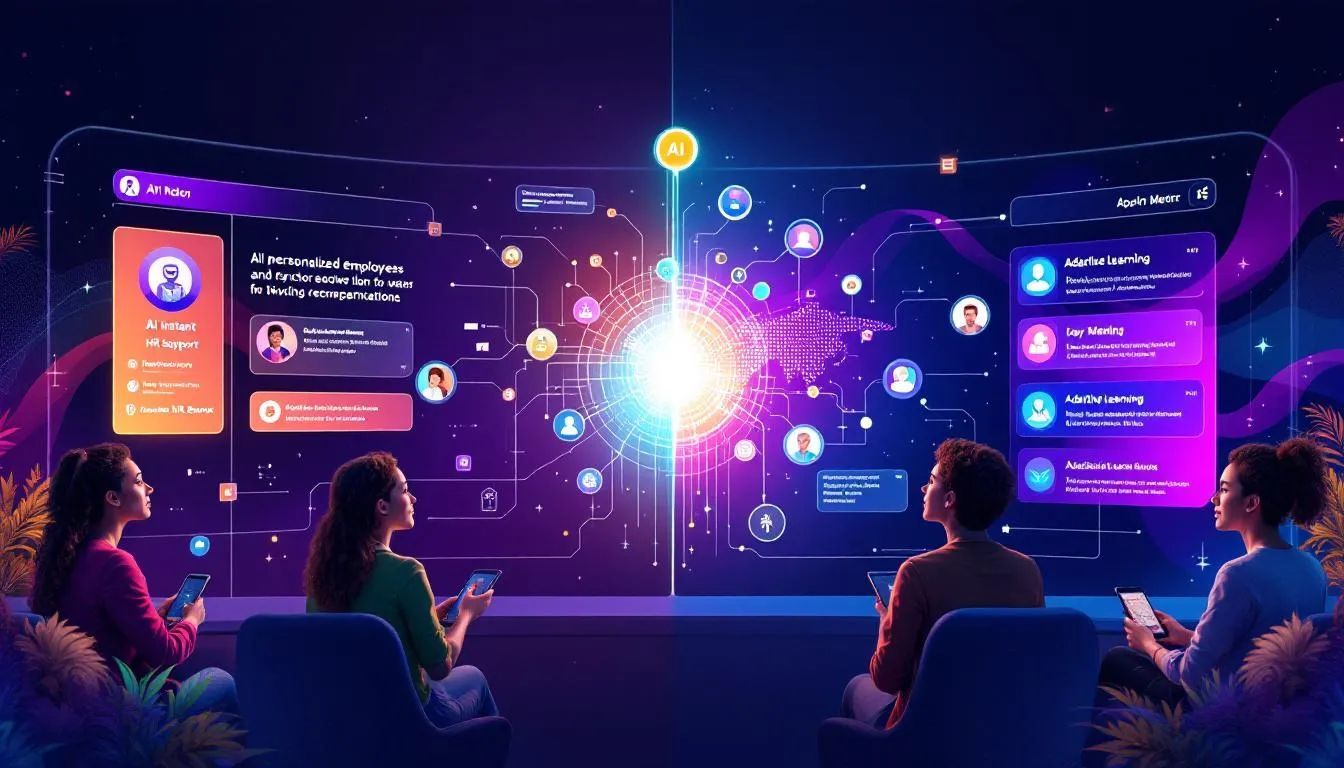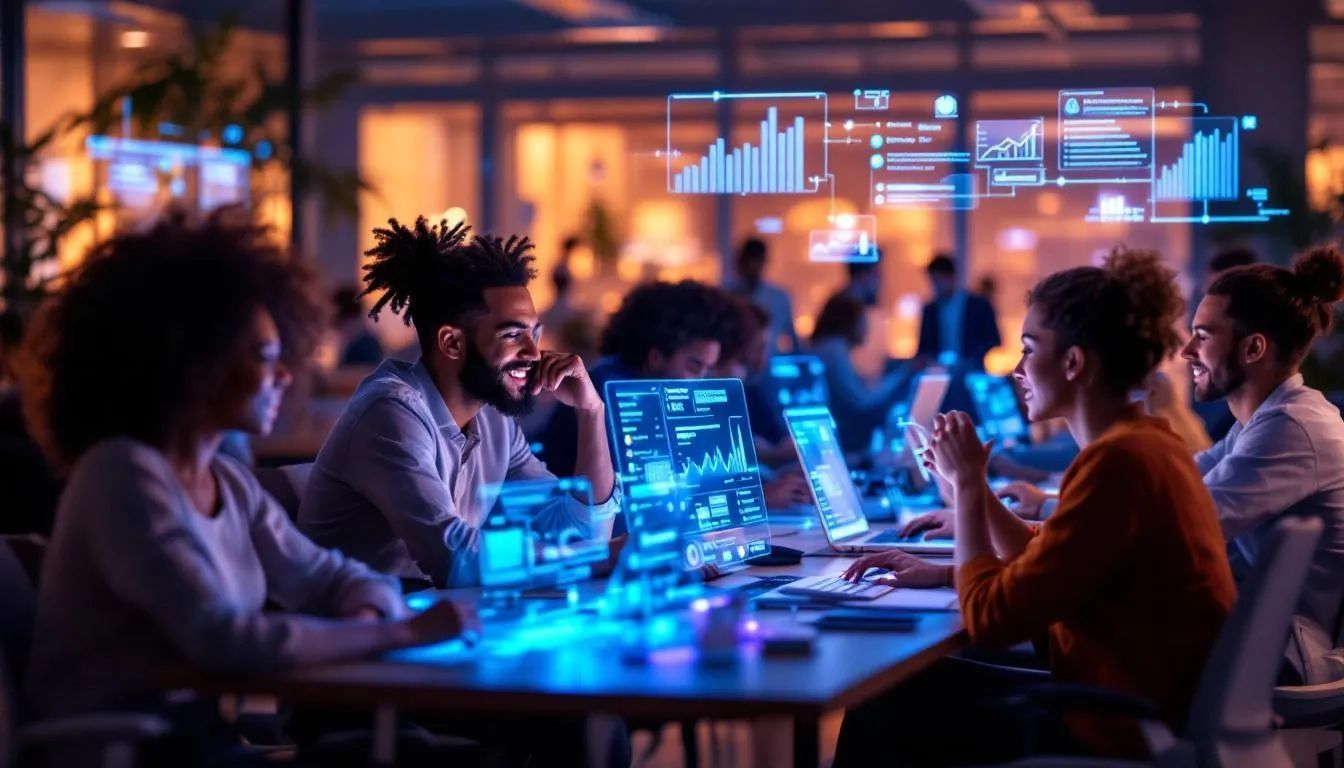Imagine a workplace where every employee feels seen, heard, and energized—where technology not only streamlines daily routines but also helps people connect, grow, and thrive. In 2025, this vision is fast becoming a reality thanks to ai-powered employee engagement. As organizations race to attract and retain talent, AI is emerging as the secret ingredient for building vibrant, resilient teams. But how does it actually work, and what steps can HR leaders take to harness its full potential? Let’s dive into a hands-on guide for making AI your ally in employee engagement this year.
Why AI-Powered Employee Engagement Matters in 2025
The link between engagement, productivity and retention
Employee engagement isn’t just a buzzword—it’s the engine that drives business results. When people feel connected to their work and colleagues, they’re more productive, creative, and likely to stay. In today’s hybrid and distributed workplaces, keeping teams engaged is both more challenging and more critical than ever.
AI-powered employee engagement offers a solution by making it easier to listen to employees, personalize their experiences, and act on their needs in real time. AI tools can spot early signs of disengagement, recommend tailored learning paths, and even foster authentic connections among colleagues. The result? Higher productivity, lower turnover, and a culture where everyone can do their best work.
Key statistics from recent studies
Recent research highlights the growing impact of AI on workforce engagement:
- According to Deloitte, 94% of business leaders say AI is critical for success, and over 60% expect it to increase productivity.
- A 2024 Qualtrics report found that employees who feel engaged are twice as likely to embrace AI at work.
- Forbes notes that 73% of US businesses use or plan to use AI-powered chatbots for instant messaging and support.
- AI-powered learning platforms are projected to grow by 31.2% annually through 2030, reflecting the demand for personalized development.
"Generally, the more positive you feel about your organization—the more trust you have in it—and the more senior your role, the more likely you are to believe that your organization will use AI for your benefit. You also trust that AI will make you more productive and efficient at your job."
— Sarah Marrs, Director of EX Strategy Execution, Qualtrics
From Data to Action: How AI Detects and Predicts Engagement Signals

Sentiment analysis across surveys, chats and calls
AI’s real magic lies in its ability to turn mountains of feedback into actionable insights. Modern platforms use natural language processing to scan employee surveys, chat logs, and even call transcripts, identifying trends in mood and engagement. This sentiment analysis can reveal hidden frustrations, highlight what’s working, and help leaders respond before small issues become big problems.
For example, if a spike in negative sentiment appears in a particular department’s chat channels, AI can flag this for HR, prompting a timely check-in or targeted support.
Predictive attrition and burnout alerts
Beyond listening, AI can predict what’s coming next. By analyzing patterns in attendance, performance, and feedback, AI models can spot early warning signs of burnout or potential attrition. These predictive alerts allow managers to intervene—offering resources, adjusting workloads, or simply having a supportive conversation—before valued team members decide to leave.
A recent Deloitte study showed that organizations using AI for predictive analytics saw a measurable reduction in turnover and absenteeism, underscoring the power of proactive engagement.
Real-time feedback loops for managers
AI-powered employee engagement tools also empower managers with live dashboards and nudges. Instead of waiting for annual reviews, managers can access real-time feedback on team sentiment, recognize achievements instantly, and adjust their approach on the fly.
This continuous loop helps build trust, keeps communication open, and ensures that recognition and support are never delayed.
"AI enables organizations to understand, connect with, and empower their employees in ways that improve and enhance their engagement, satisfaction, and productivity."
— Cerkl, AI Employee Engagement Insights
Essential AI Tools Transforming the Employee Lifecycle
Chatbots and virtual assistants for instant support
Chatbots are no longer just for customer service—they’re now indispensable in HR. AI-powered virtual assistants can answer HR questions, guide employees through benefits enrollment, and troubleshoot IT issues around the clock. This instant support reduces frustration, saves time, and allows HR teams to focus on more strategic work.
Adaptive learning platforms that close skill gaps
Learning is most effective when it’s tailored to individual needs. AI-driven platforms analyze performance data, interests, and skill gaps to recommend personalized training modules, micro-courses, or even peer learning groups. This adaptive approach ensures that employees get the right support at the right moment, boosting confidence and engagement.
Internal talent marketplaces for gig-style growth
The future of work is flexible, and AI is leading the way. Internal talent marketplaces use AI to match employees with short-term projects or “gigs” across the organization. This allows people to explore new skills, build connections, and contribute where they’re most passionate—without leaving the company.
Workday’s internal gig platform, for example, lets employees dedicate up to 50% of their time to projects outside their main role, with 95% reporting new skills and greater engagement as a result.
"AI isn’t replacing humans—it’s empowering them. It’s the ultimate teammate, freeing up employees to focus on what they do best."
— Deloitte, AI-Powered Employee Experience
Personalization at Scale: Delivering Netflix-Level Experiences at Work
Crafting tailored communications and benefits
Employees now expect the same level of personalization at work that they get from streaming services or online shopping. AI makes this possible by analyzing preferences, roles, and feedback to deliver communications, newsletters, and benefits recommendations that truly resonate.
For instance, instead of generic emails, AI-powered platforms like Neroia effortlessly deliver tailored invitations to small-group activities—be it yoga at lunch, a book club, or a team hike—based on individual interests and schedules. This not only reduces planning friction but also helps colleagues form authentic connections, strengthening workplace culture.
- Personalized onboarding plans
- Targeted wellness offerings
- Custom news digests based on role and interests
AI-guided career pathing and mentorship
Career growth is no longer a straight ladder. AI-guided career pathing tools map out unique journeys for each employee, suggesting learning modules, mentors, and stretch assignments based on aspirations and strengths. These platforms can even recommend internal gigs or networking opportunities, making it easier for employees to visualize—and achieve—their next big move.
AI-led mentorship platforms go a step further, matching employees with the right mentors by analyzing skills, goals, and even personality traits, ensuring every coaching relationship is meaningful.
"Shouldn’t the place where we spend so much of our time and energy understand us better than any brand out there?"
— Andy Biladeau, SHRM
Guardrails First: Ethics, Bias and Privacy in AI Engagement Programs
Tackling algorithmic bias with human oversight
While AI opens new doors, it also brings responsibility. AI systems learn from historical data, which can carry hidden biases. Without checks, these biases may inadvertently affect hiring, promotions, or feedback.
Organizations must set up regular audits and maintain human oversight to ensure fairness. This means reviewing AI-driven decisions, involving diverse stakeholders in tool selection, and being transparent about how algorithms work.
Building transparent data-governance frameworks
Trust is the foundation of ai-powered employee engagement. Employees need to know how their data is collected, used, and protected. Leading organizations are adopting clear data-governance frameworks that prioritize privacy, limit monitoring, and give employees control over their information.
Best practices include:
- Explaining what data is collected and why
- Allowing employees to opt in or out of certain AI features
- Encrypting sensitive information and restricting access
- Regularly updating policies based on feedback and regulations
"AI can be a powerful tool for personalizing the employee experience, but it must be implemented with clear boundaries. Employees should feel empowered, not monitored."
— Jim Link, SHRM
Roadmap to Adoption: 5 Steps HR Teams Can Start Today

Ready to bring ai-powered employee engagement to life? Here’s a practical, five-step roadmap for HR teams:
- Audit your data foundation
Assess the quality, organization, and accessibility of your employee data. Clean, accurate data is the bedrock of any successful AI initiative. - Pilot quick-win use cases
Start small with projects like AI-powered chatbots or personalized learning modules. Choose use cases that address clear pain points and deliver visible value. - Upskill managers and communicate openly
Train leaders to use new tools and explain AI’s role to employees. Open communication builds trust and boosts adoption. - Measure impact and iterate
Track engagement, productivity, and retention metrics. Use feedback to refine your approach, making improvements as you go. - Scale responsibly across the enterprise
Once initial pilots succeed, expand AI solutions thoughtfully. Ensure ongoing oversight, ethical practices, and a people-first mindset.
"Start small with their initial deployment whilst thinking about the bigger picture... Let AI be the architect, not the blueprint."
— Deloitte, AI-Powered Employee Experience
What’s Next? Emerging Trends Shaping AI-Driven Engagement
Generative AI for dynamic coaching
Generative AI is moving beyond static content to deliver real-time, conversational coaching. Imagine a digital assistant that listens to meetings, offers tips on communication style, and suggests personalized development actions—all while keeping privacy top of mind.
Wearables and well-being analytics
Wearable devices and mobile apps are now being integrated with AI to track well-being, stress, and even team energy levels. These insights allow organizations to offer timely wellness resources, encourage healthy habits, and foster a supportive environment.
The rise of voice-first workplace interfaces
Voice assistants are making workplace tools more accessible, especially for frontline or remote employees. AI-powered voice commands can schedule meetings, provide policy information, or even translate conversations, breaking down barriers and boosting inclusion.
- Generative AI for interactive learning and coaching
- Wearable tech for real-time well-being feedback
- Voice interfaces for hands-free support and accessibility
Conclusion
In 2025, ai-powered employee engagement isn’t just a trend—it’s a game-changer. By blending advanced technology with a human touch, organizations can create workplaces where everyone feels valued and connected. Platforms like Neroia make it effortless to discover shared interests and build authentic relationships, turning everyday moments into meaningful experiences.
As you chart your path forward, remember that the best results come from combining AI’s analytical power with empathy, transparency, and ethical leadership. When you put people at the center and use AI as an enabler, you’ll unlock higher engagement, stronger culture, and a future-ready organization.
Neroia stands ready as your trusted partner to help you cultivate a more connected and vibrant community—today, and in the years to come.




